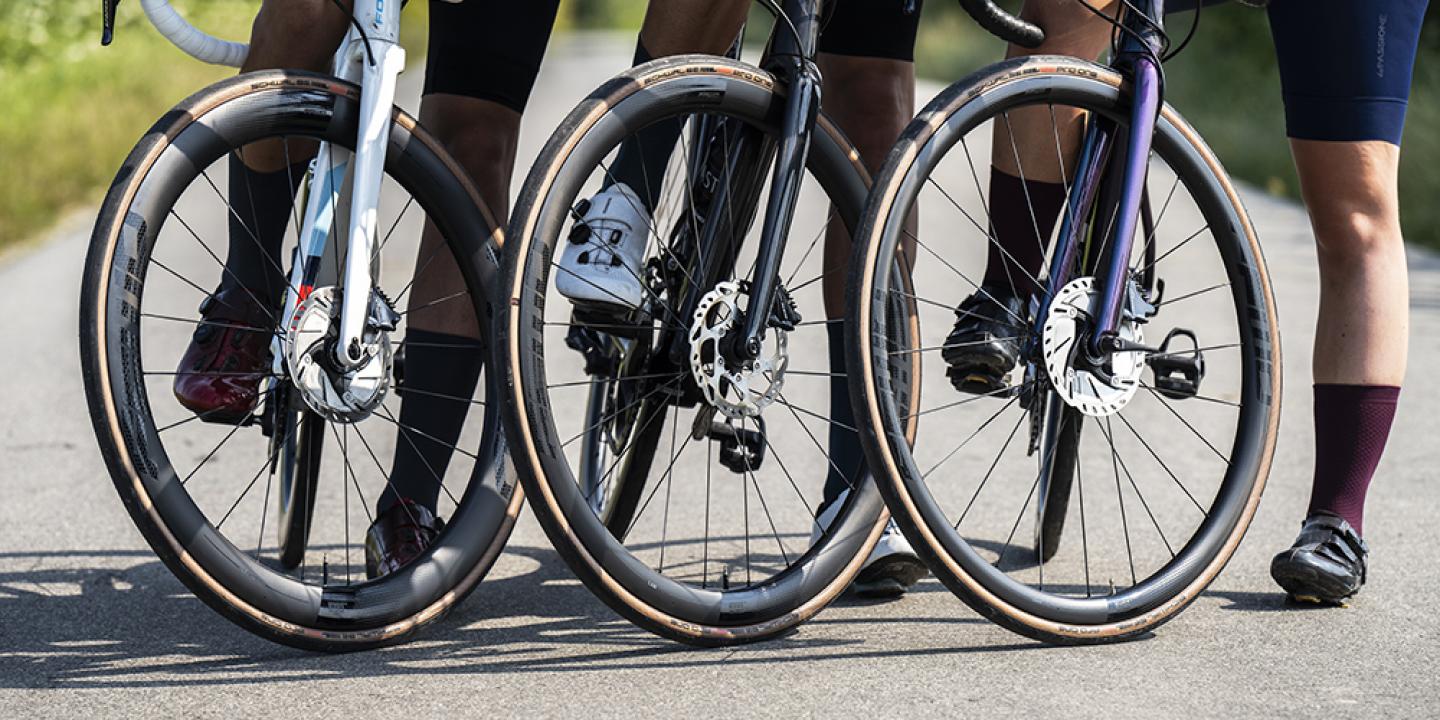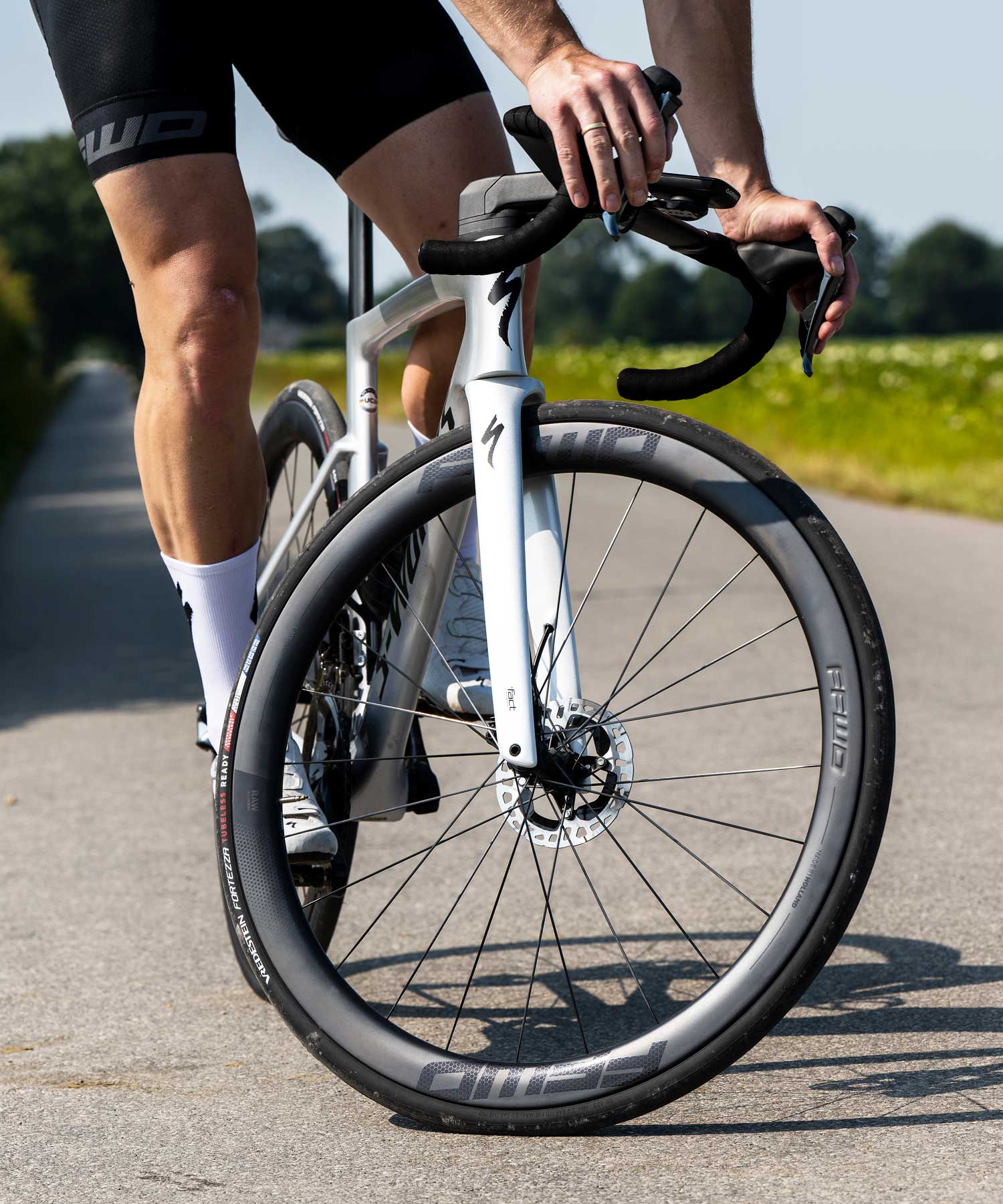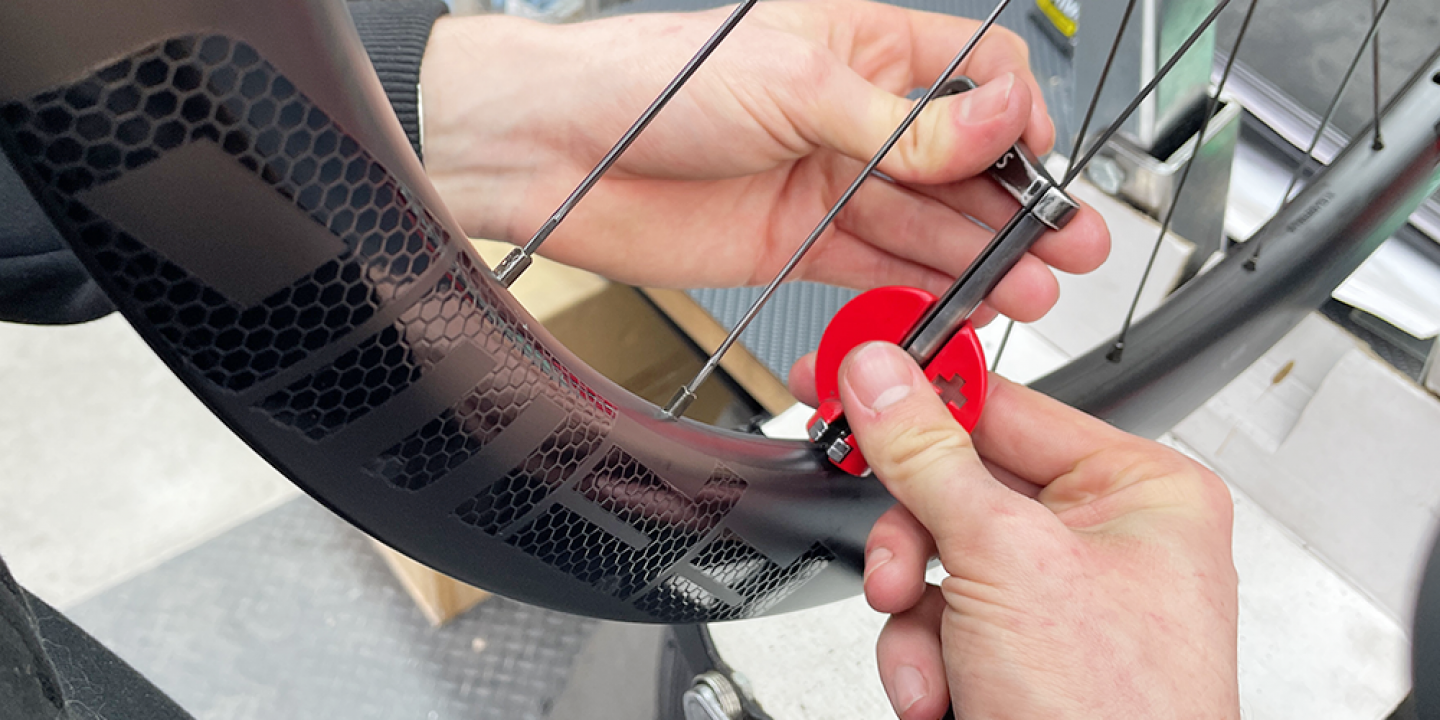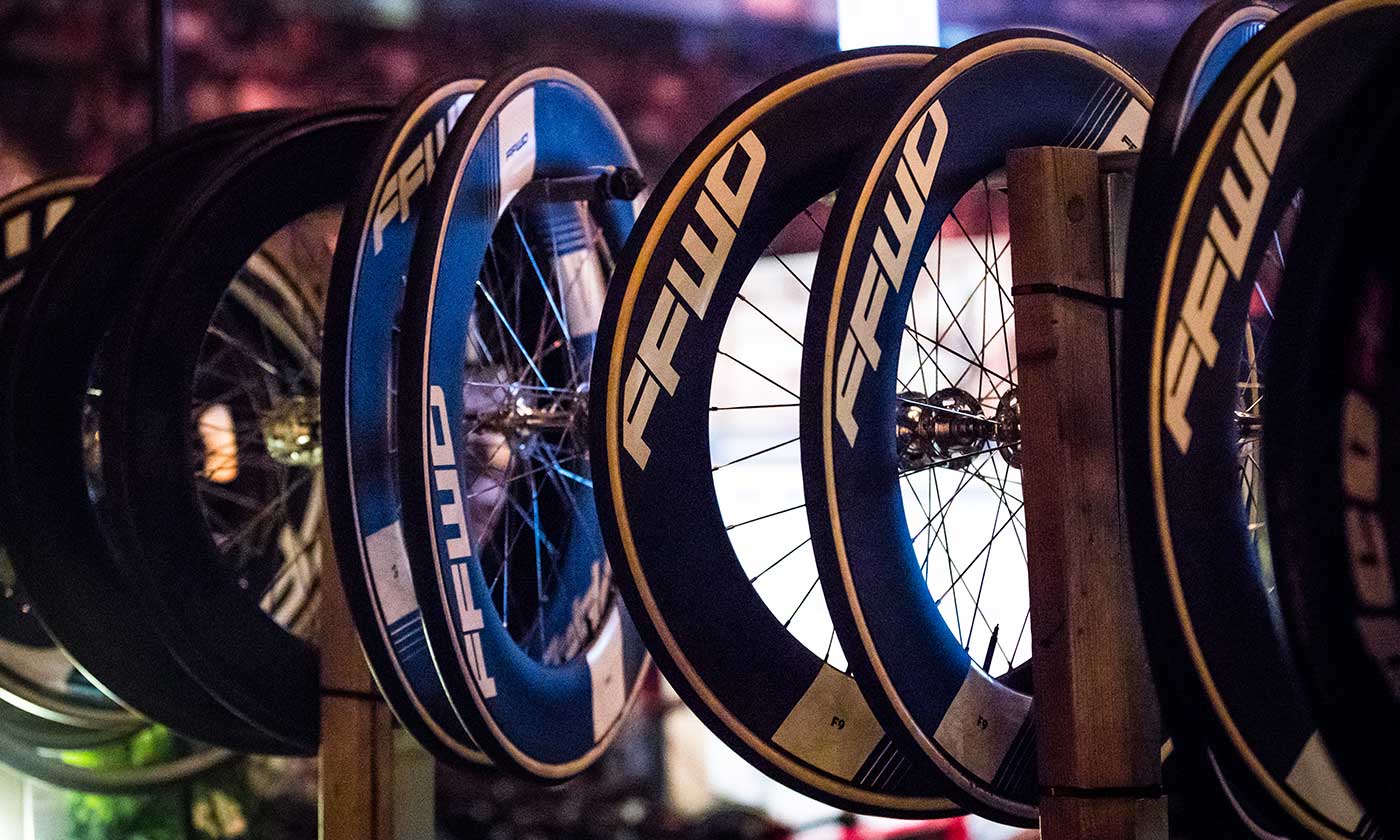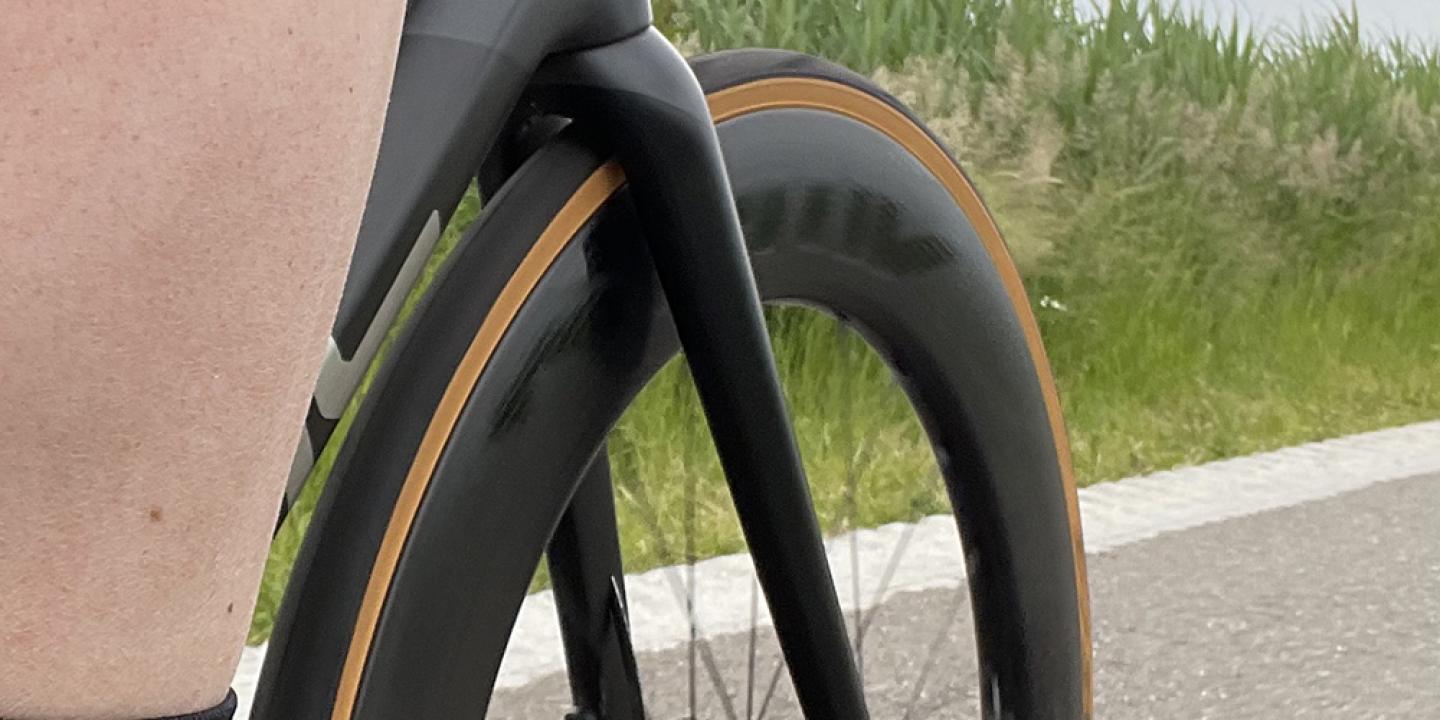How to choose your perfect cycling wheels
Cycling wheels are without a doubt the most important component of your bike. Affecting everything from speed and handling to comfort and performance. Finding it difficult to find the best set of wheels for your bike? In this detailed guide, we will walk you through the key factors you need to consider when choosing your perfect cycling wheels. Whether you're a beginner cyclist or a competitive racer, this guide will definitely help you make an informed decision.
After reading this guide, you will know more about:
- Different type of bikes, different type of wheels
- The importance of wheel choice on different terrain and surfaces
- Types of wheels to choose from
- Which materials cycling wheels are made of
- How wheel rim width affects performance and handling
- Choosing the right rim depth for your riding style
- Last but not least: the hubs
- Conclusion
Different type of bikes, different type of wheels
You probably know most of the bicycle types for cycling which can use high-end wheels. Let's recap the list:
- Road bikes
- Mountain bikes
- Gravel bikes
- Time trial and triathlon bikes
- Track bikes
Different types of wheels are available for all these five categories, differing mainly in details. In many cases, the bikes and wheels are interchangeable but because the purpose of the wheels differs from each other, the specifications also differ. For example, time trial and triathlon wheels are aimed purely at speed, where with mountain bike and gravel wheels, handling and weight are most important.
The importance of wheel choice on different terrain and surfaces
Both the terrain you ride and the surface, paved or unpaved, plays an important role in choosing the ideal set of wheels. If you ride your road bike on flat asphalt roads, low rolling and air resistance are the starting point for getting the best results. When you are going up into the mountains, a low weight will give you the best benefits.
For time trials and triathlons, especially if there is a lot of wind, you need maximum aerodynamics. Wheels with a high rim, sometimes even a full carbon disc wheel, do really make the difference. Sometimes you can gain minutes during long races.
Going off-road? Be sure to choose wheels with a wider rim. On the wider rims you can mount wider tyres which is ideal for rough terrain and optimal handling and grip.
Finally, the speedy wheels especially for track bikes. These track bikes don't have no brakes, because of that you need completely different wheel hubs. Also, there are no gears on a track bike so you only need to mount one sprocket on the special rear hub. With track wheels, the focus is on lateral stiffness and pure speed.
Types of wheels to choose from
Originally there are two main types of cycling wheels: clincher and tubular. For some years now, the tubeless variant has been added, and is starting to become the new standard. Clincher wheels are the most common and feature an inner tube that can be easily replaced when suffering a flat tire.
Tubular wheels, on the other hand, have a seamless tire that is directly glued onto the rim. While tubular wheels are lighter and offer a smoother ride, they can be more difficult to repair when a flat tire is passing by.
Tubeless wheels actually offer you the best of both worlds. Riding without an inner tube, great handling, and in case of a puncture you can still put an innertube in. The special tubeless ready tyre is mounted on the rim without using an innertube. The edge of the tyre hooks into the rim and because there is an airtight tape mounted in the rim and a tubeless valve, you can inflate the tyre without losing air. As a bonus, you run some (latex) sealant into the tyre which provides extra protection. Got a small puncture? The latex sealant will repair the hole, mostly without you even noticing it. That's great, isn't it?
Which materials cycling wheels are made of
Cycling wheels are typically made from a variety of materials, including carbon, aluminum, and steel. Each material has its own advantages and disadvantages, from weight to stiffness to cost. So it is important to know your needs and, of course, your budget if you want to buy new wheels.
Carbon wheels are by far the lightest and also the most expensive, while aluminum wheels are more affordable and offer a more forgiving ride when using a low-profile rim.
How wheel rim width affects performance and handling
Wheel rim width is another important factor to consider when choosing your perfect cycling wheels. A wider rim can provide more stability, and allows you to mount wider tyres. Especially with off-road wheels, this provides more comfort and the best handling and ride characteristics. With road wheels, the bonus is that a wider rim creates less drag due to increased aerodynamics.
The right rim width for you will depend on the type of riding you are, and for what purpose and in what kind of bike you will use the wheels. Over the years, wider rims are becoming the standard. Thanks to new insights and many tests, we have learned that a wider rim gives the best results in almost all conditions.
Choosing the right rim depth for your riding style
Wheel rim depth affects riding style and characteristics in several ways. When choosing the right wheel rim depth for your new high-end carbon cycling wheels, the following factors should be considered:
- Riding style: Your riding style, the bike you are rinding and the type of terrain you typically ride on will influence the ideal rim depth for your needs.
- Aerodynamics: Deeper (or higher) wheels rims are more aerodynamic, which make them ideal for time trial, triathlon and road race events where reducing wind resistance is important.
- Stability: Shallower wheels rims will provide you a much better stability in crosswinds, which are making them more suitable for windy conditions. This makes them more suitable for riders who prioritize handling and stability over aerodynamics.
- Comfort: The depth of the rim can also affect the comfort of the ride. Deeper rim wheels are typically more rigid and less forgiving, while shallower rims are more flexible and offer a more compliant ride.
- Weight: Wheel rim depth also impacts the weight of the wheel, which can affect the handling and performance of the bike. Deeper rim wheels tend to be heavier, while shallower rims are lighter. This can be important for riders who are looking to improve climbing performance for instance.
- Budget: Deep-rimmed wheels tend to be more expensive, so budget can also be a consideration when choosing the right wheels.
Ultimately, the best wheel rim depth for a rider depends on their individual needs and preferences, including the type of riding they do, the terrain they typically ride on, and their personal riding style. It is important to consider these factors and choose the rim depth that best fits your specific needs and preferences as a cyclist.
Last but not least: the hubs
After looking mainly at the different types of rims, and how they affect the handling and ride characteristics, we cannot forget the importance of the hubs in the wheels, of course.
If you are about to buy a set of new wheels, don't forget to think about which hubs best suit your needs. Choosing the right hubs for high-end carbon cycling wheels is important because they play a crucial role in both performance and durability of the wheels. There are some factors to consider when choosing hubs for high-end carbon wheels. We'll list them for you.
- Durability: Quality hubs for cycling wheels should be durable and able to withstand the stress of high-performance riding.
- Weight: Hubs contribute a lot to the overall weight of the wheel, and lighter hubs can result in improved both performance and acceleration.
- Compatibility: Make sure the hubs you choose are compatible with your bike's frame, fork, brakes and drivetrain.
- Bearings: The quality of the bearings in the hubs can greatly impact the smoothness of the ride and the durability of the wheels. Always choose for hubs with high-quality, precision bearings which are of course replaceable.
- Axle type: There are several different axle standards available, including quick-release, thru-axle, and others. Make sure you choose hubs that are compatible with the axle system used on your bike.
- Drivetrain compatibility: Take a close look at the drivetrain system used on your bike when choosing hubs, as some systems may require specific hub types or configurations.
As you see it's important to choose hubs that match the needs of your riding style and compatibility with your bike. This will provide you the perfect balance of durability, weight, and performance.
Conclusion
Having named all the points that are important when making the right choice for which new wheels to choose, here is our final conclusion.
Choosing the right high-performance cycling wheels is a critical decision for any cyclist looking to improve their performance and experience on the road or of you prefer to ride on unpaved surfaces. There are several key factors to consider, including riding style, materials, wheel rim depth and hub quality. By carefully considering these factors and choosing wheels that match your individual needs and preferences, you can start enjoying improved speed, handling, comfort, and durability from your cycling experience. Whether you're a serious athlete or simply a weekend warrior, investing in high-quality cycling wheels can make a significant difference in your overall performance and enjoyment on the bike.
If you have any questions, or you need personal advice in making the right choice for your new cycling wheels, please do not hesitate to contact us. We are at your service.
